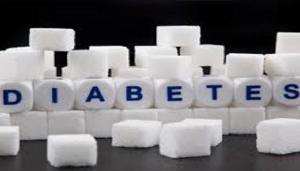Crucial Information on Diabetes Mellitus: Facts Not Myths
Diabetes Mellitus is an illness that is dreaded by many. Today its one of the highest killers in the world especially in those of senior age.
Crucial Information on Diabetes Mellitus: Facts Not Myths
by AlfieDiabetes mellitus is a chronic condition; it is a lifetime condition that if well managed and controlled through some recommended steps and medication; this reduces the arising of diabetic medical emergencies. Globally, diabetes affects approximately over 150 million people. This endocrine disorder causes numerous metabolic alterations in the body resulting to some severe complications such as damage to the retina, kidneys, nerves, cardiac functioning and circulatory system. Unfortunately, the incidences of diabetes are rapidly increasing thus if not well manage the number of diabetic patients will double in the near future.
Functions of Insulin in the Body
1 The body needs glucose to produce energy to enable the metabolism of the various vital performances. Glucose is mainly gotten from the carbohydrates such as cereals and starch that include wheat, rice and many others. Insulin assists in the assimilation of glucose into the body cells especially into the liver and brain. The insulin present in the cells converts the glucose into energy for use in majority of body functions. However, insufficient or lack of insulin makes the glucose not be transported to the body cells thus no energy is produced.
2 With the absorption of glucose into the cells, insulin also assists in the synthesizing the glycogen to glucose in the liver and other muscle cells. The stored form of glucose or the glycogen acts as a source of reserve energy. In time of energy needs, the glycogen is reversed back into glucose and utilized by different body cells.
3 Another function of insulin is to inhibit the synthesis of glucose from other sources than carbohydrates or Neoglucogenesis. This process significantly decreases the blood sugar level.
4 The hormone insulin also assists in the entry of amino acids into body cells to be synthesized into proteins.
5 Insulin promotes lipogenesis which is the synthesis of triglyceride thus facilitates the entry of fatty acids within the cells.
Common Types of Diabetes Mellitus
1. Type I or the Insulin-Dependent Diabetes Mellitus (IDDM)
Insulin-Dependent Diabetes Mellitus also referred to as the juvenile-onset, ketosis-prone or immune-mediated diabetes mellitus. This develops when the pancreas makes no or inadequate insulin. This type of diabetes is less severe compared to Type II; it mostly affects persons under 30 years and accounts for 5-10% of all diabetes cases. IDDM is caused by damage to the pancreas or a glitch in the immune system leading to damaging of the beta cells.
How to control IDDM
Diabetes IDDM can be controlled by three easy steps;
Regular exercising
Daily injections of insulin to lower the blood glucose levels and,
The consumption of well balanced diet.
Risk factors for developing IDDM
IDDM development is affected by individual race or ethnicity; it is more prevalent in persons of Caucasian descent
Heredity or genetics also contribute to the development of the IDDM; if any of the parents has type I diabetes, it is highly likely that one of the siblings will have it too.
2. Type II or the Non-Insulin Dependent Diabetes Mellitus (NIDDM)
NIDDM also referred to as the maturity-onset diabetes commonly affects persons over 30 years of age. The NIDDM is mostly a hereditary disease with the onset being related to the patients’ lifestyle such as obesity, inactivity, drugs abuse, excessive alcohol consumption. Obesity the major risk factor diabetes Type II affecting even children that are too sedentary and obese. Diabetes Type II accounts for almost 90% of diabetic cases worldwide.
Patients with diabetes Type II are incapable of producing adequate insulin, regulate glucose levels or their cells cannot respond to the insulin present; this is called insulin resistance. Insulin resistance happens in overweight people for the fat blocks inhibit the action of insulin on glucose. Non-insulin dependent diabetes mellitus treatment and management centers mainly around properly designed diabetic diet and regular exercising.
Symptoms of Type II Diabetes
The common symptoms of diabetes type II include; high amounts of excreted glucose through urinating leading to dehydration; the patient feels thirsty all the time thus drinks excess amounts of water, rapid weight loss despite increased appetite, fatigue, nausea, frequent vomiting, unexplained urinary bladder, skin and vaginal infections, blurred vision due to deteriorating retina and lethargy. If these symptoms are not addressed by treating or controlling the diabetes mellitus escalation they can become fatal
Gestational Diabetes
Gestational diabetes mellitus (GDM) or glucose intolerance of pregnancy is temporary or short term condition intolerance to glucose with the onset of pregnancy. This type of diabetes affects 2 to 4 percent of all pregnancies and involves an increased risk of developing other diabetes for both mother and child. The expectant mothers may have controlled glucose levels during the first half of the pregnancy and develop insulin deficiency in the latter half of the pregnancy, leading to hyperglycaemia.
Usually gestational diabetes mellitus is managed by consuming proper diabetic diets and exercising. Fortunately, the condition recedes with the child’s delivery. However, if not controlled it can develop to the other types of diabetes
Risk for Developing Gestational Diabetes (GDM)
The most common risks contributing to developing gestational diabetes are:
Heredity or genes; if parent have diabetes it is like that the children will be affected.
Previous Gestational diabetes in a previous pregnancy.
Prior birth defect in earlier pregnancy.
Obesity in the woman especially those with BMI that is greater than 29.
Pregnancies in mothers over the age of 30 years.
Previous stillbirth or spontaneous miscarriage.
Past delivery of a large baby.
A history of some of the pregnancy induced high blood pressure, urinary tract infections, hydraminos and others
Ethnic or race especially women of Hispanic, African-American decent and First Nations.
Risk for babies born to mothers with Gestational Diabetes Mellitus
Delivery of large or fat babies or Macrosomia
Occurrence of birth trauma or shoulder dystocia
Low sugar levels in newborns or Neo-natal hypoglycemia
Extended jaundice in newly born babies
Low level blood calcium
Respiratory disorders in newborns
Developmental jaundice
Increases chances of stillbirths
Death in infancy
There are other forms of diabetes mellitus that include Diabetes insipidus which is a very rare disease. In Diabetes insipidus, there is the dysfunction of the pituitary gland or the hypothalamus of brain. This results in lack of vasopressin hormone; vasopressin hormone controls the amount of water excreted from the body as urine. In this case, the kidneys cannot retain water removed from the blood making the patient urinate excessively hence becoming extremely thirsty all the time. The cases of Diabetes Insipidus are untreatable but can be controlled and managed by the intake of artificial vasopressin.
The other forms of diabetes mellitus include congenital diabetes that comes due to genetic defects of body insulin secretion, cystic fibrosis-related diabetes; steroid induced diabetes occurring due high doses of glucocorticoids in the body and several other types of monogenic diabetes.
Complications of Diabetes Mellitus
In both diabetes mellitus type I and type II there is a significant increase blood glucose levels leading to a condition called hyperglycemia. If not treated or controlled properly hyperglycemia damages the eye’s retina, the kidneys’ blood vessels, the nerves system and other blood circulatory vessels. Most complications of diabetes mellitus are both acute and chronic; acute complications result to extremely elevated blood glucose or extremely low blood glucose resulting from diabetes treatments while chronic complications result in diseases of the blood vessels; both small and large. It contribute to the damaging of the eyes, renal organs, nerves and the heart.
Diabetes mellitus results in blindness on the patients due to the damaging of the retina or diabetic retinopathy.
There are cases of kidney failure or diabetic nephropathy.
Damage to the nerves system or diabetic neuropathy from diabetes leading to foot wounds and ulcers that are causes of foot and leg amputations in many diabetes mellitus patients.
Paralysis of the stomach or gastroparesis, chronic diarrhea, irregular pulse and blood pressure during postural changes resulting from the damage in the autonomic nervous system.
Diabetes mellitus increases the atherosclerosis or the formation of fatty slakes in the arteries that lead to blocking or a clotting of blood in the arteries or thrombus. These changes contribute to the occurrence of heart attacks, strokes and reduced blood circulation in arms and legs or peripheral vascular disorder.
Diabetes mellitus exposes patients to escalated blood pressure, increased cholesterol and triglycerides. These two conditions either individually or combined with hyperglycemia multiplies the risk of cardiac diseases, malfunctioning of the kidneys and other blood circulation related disorders.
There are other acute or short lived serious problems that are brought about by diabetes mellitus such as;
Due to the impairment of immune system the diabetes patients experience myriads of infections that are later compounded by lack of glucose control leading to delayed recovery from the infections.
Hypoglycemia or low blood glucose is very prevalent in diabetic people. This can result from excess use of diabetes medication or insulin also referred to as insulin reaction, self starvation, excess exercising, excess alcohol consumption or the intake of other illnesses medication. The symptoms of hypoglycemia are sever headaches, dizziness, loss of concentration, profuse sweating and, hand tremor. In advanced cases the patient experiences fainting and seizures when the blood glucose levels fall to low levels.
Uncontrolled or absolute lack of insulin or a significant deficiency of insulin over time allows the build-up of ketones or the acidic waste products in the blood. This serious condition is called diabetic ketoacidosis (DKA). Excess levels of ketones in the body is lethal and mostly affects people with uncontrolled diabetes type I. Diabetic ketoacidosis can result from infections, unmanaged stress, trauma, lack of medications like insulin, or other medical emergencies that include stroke and heart attack.
Hyperosmolar hyperglycemic non-ketotic syndrome occurs when the blood glucose levels become very high. The body tries to self-rid the excess blood glucose by through the urine increasing the frequency of urination leading to dehydration of the body. Dehydration can cause comas, seizures and the ultimate death of the diabetes patient. This syndrome is common in people with diabetes type 2 who fail to control their blood sugar levels when they become dehydrated, stressed, injured, struck by stroke, or are under such medication as steroids.
Self Help Strategies on Treatment and Control of Diabetes
1. Exercising to control diabetes mellitus assist in Controlling Diabetes Mellitus
Different types of exercises are very important in maintaining a healthy body and managing diabetes. The combination of diabetic diet, well planned exercising and diabetic medicine as prescribed by the doctor greatly assist controlling weight and blood glucose levels. The known benefits of exercising to diabetic people include;
Lowering of blood sugar by easing the movement of glucose in the cells also known as invisible insulin.
Exercising promotes weight loss and the upholding of the right body weight and BMI.
It reduces cardio-vascular risks by enabling efficient heart performance.
Exercising improves blood circulation.
It reduces pancreatic strain
Results in muscular toning.
It generally reduces the effects of accumulated stress.
Exercise diabetes control is very important to the health and life of the diabetes patient; however it must be fully supervised by a medical doctor.
2. Using diet to control diabetes mellitus
For diet is one of significant factors that trigger diabetes mellitus, the consumption of any carbohydrates diet should be closely observed to avoid the increase of the overall blood glucose level.
Diabetes mellitus is a difficult disease to control. But proper monitoring and control of the blood sugar levels at all times can reduce or completely eliminate the diabetes complications. The following foods are responsible for the development and escalation of diabetes mellitus thus should be strictly avoided;
Diets containing foods with sugar or jiggery including jams, jellies, marmalades, chocolates, desserts, ice creams and candies among many others.
All forms of honey; raw or processed
All artificially sweetened drinks including sodas such as coke
All milk and milk products including butter, cheese and condensed milk
All fruits contain high sugar contents and their juices
Oily or fatty foods
All alcoholic beverages including wines, ales, beer and all others
Eating rules for diabetic
The people suffering from diabetes should not do the following; eat and drink at the same time, eat hastily, fast, eat to full stomach, eat when stressed, smoke or drink alcohol, eat raw fruits and vegetables together, do heavy chores immediately after a meal, avoid drinking water, eat salty foods; they should substitute salt with other natural flavorings, eat sodium containing foods such as spinach and eat in irregular intervals,
3. Change in personal lifestyle
In a way diabetes mellitus is a lifestyle disease; it is more rampant in the upper classes for they are exposed to more unhealthy foods and lifestyles such drinking alcohol, smoking and drug abuse thus the disease is referred to as the rich man’s disease. The self control of these behaviors can play a great role in controlling the complications of the diabetes mellitus.
Persons leading more sedentary lifestyles are more prone to non-insulin dependent diabetes, or diabetes type II. These people have unexercised muscles and tissues; this definitely affects entire action of insulin by reducing its capacity in glucose synthesis.
Reduction of stress is another very important strategy of controlling diabetes mellitus. It has been noticed that stress causes the malfunctioning of the pancreas, and the consequent secretion of insulin. There are several factors that bring about stress and trauma such as;
Injury to vital organs
Medical surgery
Germs infections
Pregnancy
Mental tensions and worries
4. Control of environmental and external factors
In some instances, diabetes mellitus originates from external factors rather than the body or within. Some ways of controlling the diabetes mellitus causing extrinsic factors include;
Avoiding the taking of steroids and any other drugs that change the hormonal equilibrium making the body susceptible to diabetes mellitus by altering the insulin levels.
Limiting the consumption of chemicals containing vegetables such as beans.
Preventing any form of infections that cause diabetes mellitus especially those that attack the pancreas and leading to its malfunctioning. The insulin dependent diabetes mellitus or the diabetes Type I caused infection of the Coxsackie virus on the pancreas among other causes.
Other factors thought to cause diabetes mellitus
1. Hereditary Factors
It has been proved that diabetes mellitus has a very strong hereditary connection especially in people with human leukocyte antigen (HLA) in their blood inherited from the parents. This group of people is likely to develop diabetes mellitus Type I. Diabetes mellitus Type 2 is no doubt hereditary but it manifests itself more due to other problems such as hypertension, high blood pressure and obesity. Others get a defective genetic where the beta cells of the islets of Langerhans are naturally impaired.
2. Age related factors
Despite diabetes mellitus occurring in any age, most of its complications repercussions on the overall health are seen in the later stages of life; from middle age.
Diabetes Mellitus Treat Advancement
All types of diabetes have been treatable since insulin the discovery of insulin in 1921. The best way to control diabetes Type II is with medications. The diabetes Type I and II are chronic conditions hence cannot be cured. In bid to cure diabetes there have been unsuccessful pancreas transplants for Type I. Other successful efforts have been seen such as gastric bypass surgery has been successful in people with morbid obesity and type II DM. Gestational diabetes naturally recedes after delivery.
Similar posts
THANK YOU
by Sharmishtha Shenoy
Thanks from the bottom of my heart
- Jul, 24 2016
- Miscellaneous Non Fiction
Diary (Day 37, 38, 39)
by Lorenzo A. Fernandez Jr.
Day 37
Today’s Friday and it’s as boring as yesterday. That pastor who produces mushroom fruiting bags is a damn liar like a damn politician. Justin told me that he has already sold all the damn bags. He has kept us waiting for...
- Oct, 9 2015
- Miscellaneous Non Fiction
the rotary end Polio walk in Kenya
by wangaripatrick
After months of planning and after sleepless nights working on the modalities of making this event a success the day is finally here and i bet we are all geared up to take to the streets of Nairobi and walk for a good course.
Its...
- Feb, 27 2015
- Adventure Non Fiction
life challenges my story
by wangaripatrick
From fake friends , underachieved targets and other Life frustrations make Life seem unfair at times. as i shared in my previous posts i feel week and feel like i am at that point of Life where you just give up but there is an inner voice in me...
- Mar, 3 2015
- Adventure Non Fiction
CROSSROAD 4
by Dahmie
The journey of an orphan through the path of life.
- Nov, 15 2016
- Non Fiction Tragedy
Math Scare
by Barbrella Claus
Math Scare
I was a brilliant student at school, good at sports, first in academics, teacher’s pet, definitely not nerdy and was an epitome for depressed parents and their performance driven kids. My mom used to hold her head up high...
- Mar, 23 2015
- Comedy Non Fiction





